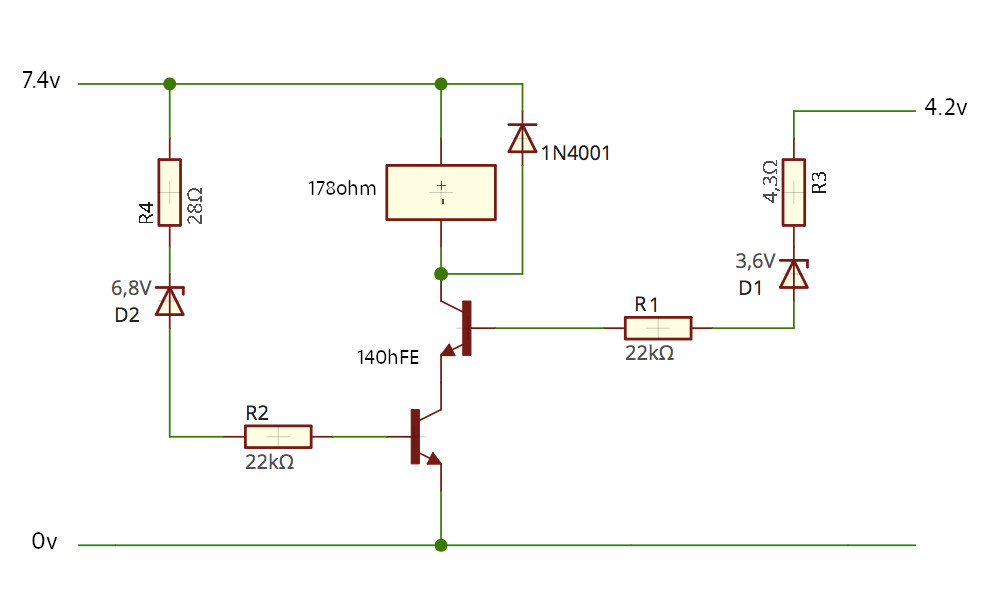As seen in the schematic, I need to control a relay using two voltage sources.
The relay goes off when source Nr.1 (4.2V) is less than 3.6V AND when source Nr.2 (7.4V) is less than 6.8V, by the effect of the Zener diodes D1 and D2. The value of the desired cutoff voltage of the Zener diodes has been reduced in 0.7V, in consideration of the transistors Vbe drop.
The Zener diodes resistors (R3 and R4) were calculated on the basis of their maximum power (500mW), using the formula (Vs-Vz)/Iz. Then a series resistor of 22k biases the transistors, whose hFE is 140 (BC549A.) The formula used was (Vs-0.7)hFE divided by the relay current.
Is this well calculated? It is the first time I design a circuit and I'm not sure if the application of the formulas for resistor values is correct and if the transistor base resistors (R1 and R2) will interact badly with the Zener resistors (R3 and R4.)
Any suggestions or different approaches to it will be very much welcomed.
(This question follows indirectly another recent post of mine.)

